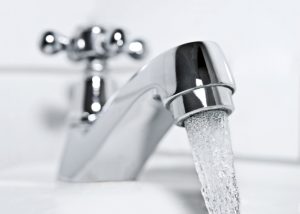 AquaCert often get asked if the tap/shower should be flushed before filling the sample bottle. The answer is that sometimes you do and sometimes you don’t!
AquaCert often get asked if the tap/shower should be flushed before filling the sample bottle. The answer is that sometimes you do and sometimes you don’t!
Let’s look at why pre or post flush sampling is important and learn why it may affect the results.
What is pre flush sampling?
For most legionella samples, this is the method that is used. Simply turn on the outlet and fill the bottle straight away. The pre-flush sample represents water held within the tap or fitting.
What is post flush sampling?
A post-flush sample with disinfection is water collected after a tap, or fitting, has been disinfected and water has been run to waste. This type of post-flush sample is intended to be representative of the quality of the water supplied to the tap or fitting.
 How can the results be different?
How can the results be different?
When a property gets a positive result, it’s time to start the detective work to establish exactly where the bacteria are. It may be a single tap, shower or valve which is providing a suitable habitat for these bacteria to live. Alternatively, legionella may have colonised most of the water system.
Example:
AquaCert advise you that the 1st Floor Sluice Room Sink Hot Water Tap has quite a small number of legionella bacteria. Do you disinfect just the tap or the whole building?
One approach is to take further samples, one sample a pre-flush and the 2nd sample a post flush after disinfecting the tap.
| Pre-Flush Sample Result |
Post-Flush Sample Result |
What Does It Mean? |
| POSITIVE for legionella bacteria |
No Legionella bacteria detected |
There are no legionella in the water before it reaches the tap. Since there are still some within the tap itself – It will need to be stripped down and all the internals cleaned/disinfected or replaced. |
| No Legionella bacteria detected |
POSITIVE for legionella bacteria |
There are legionella bacteria within the distribution system. The problem is more widespread than just this tap. Check other sentinel outlets to assess if the problem is local to just one part of the building. |
How do you disinfect a tap for a “Post-Flush” sample?
If there are both ‘pre’ and ‘post’ flush samples from the same outlet, always perform pre flush sampling first.
- Run the outlet, at least one litre (or until the water runs clear).
- Remove any anti-splash, spray nozzle or flow director device.
- Clean the accessible parts of the tap to remove debris such as scale/corrosion products and general grime.
- Use a syringe or spray bottle to inject disinfectant inside the nozzle of the tap until it runs out.
- Wait for at least 2 minutes for the disinfectant to destroy any bacteria it is in contact with.
- Turn on the tap, adjust to achieve a medium flow rate. Continue flushing the tap to drain for approx. 45 seconds to remove all traces of disinfectant.
- Whilst the tap is still running, fill the sample bottle to the 1000cm3 (1 litre) marker line.
- Invert the sample bottle several times to ensure biocide neutralizing agent is well mixed within the water.
What disinfectant should be used?
There are two common disinfectants types used to sanitise outlets prior to sampling.
Alcohol Based
70% Isopropyl Alcohol
- (also called IPA, 70% v/v ethanol and water or 70% v/v propan-2-ol and water)
Chlorine Based
Approx. 5,000ppm solution
- If you are using household (supermarket) bleach, dilute one part bleach to 9 parts water.
- If you are using industrial bleach (14-15%), dilute one part bleach to 30 parts water.

